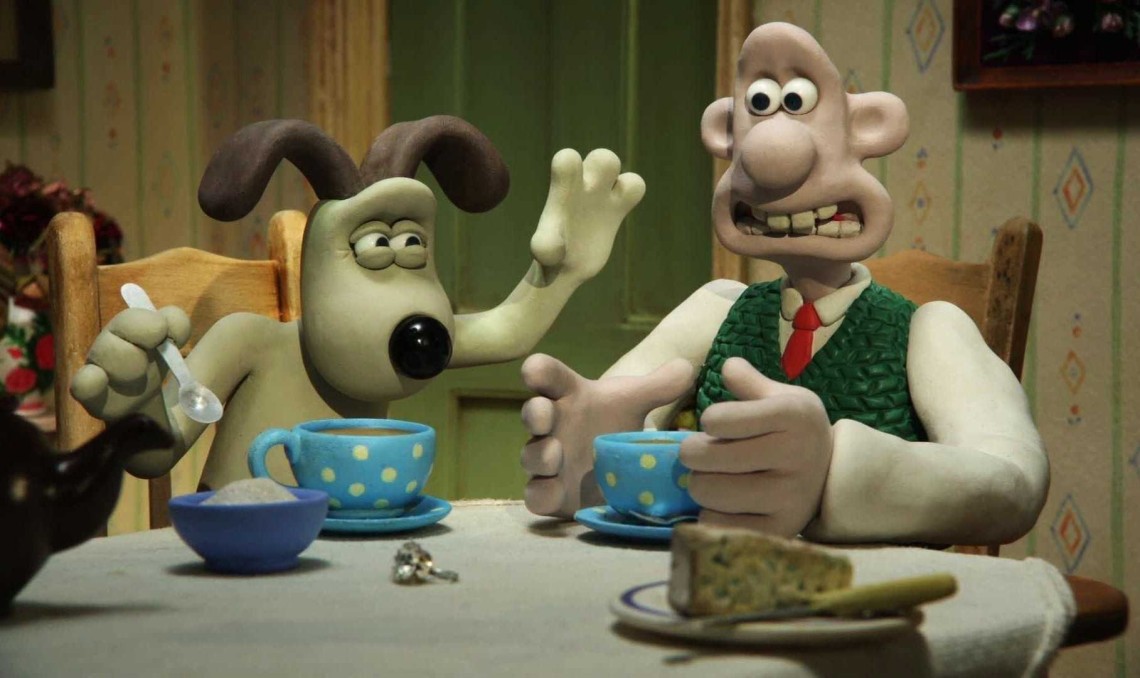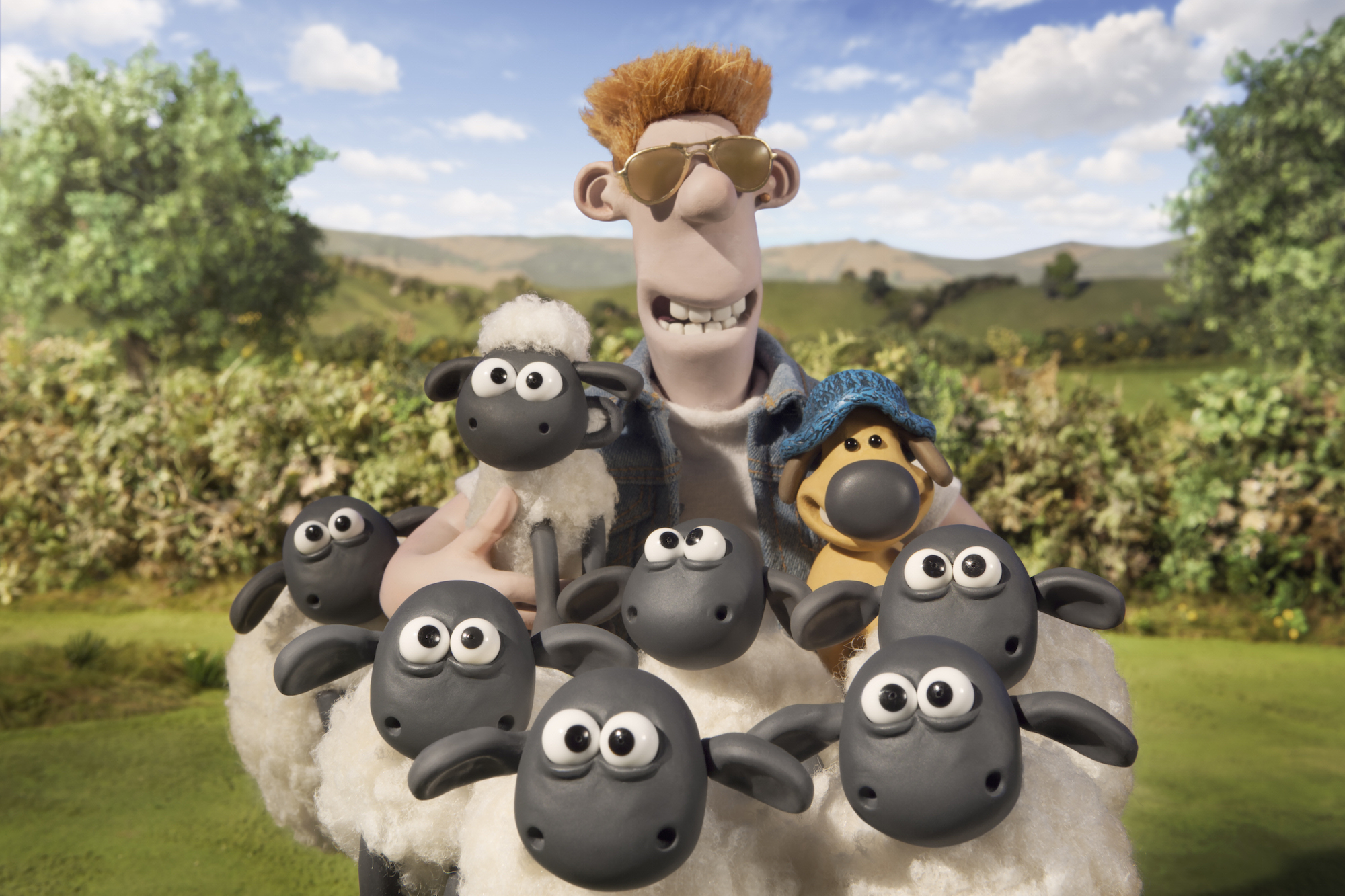Roughly a decade ago, the world of animation was nearly dealt a serious blow in the form of a fire destroying over three decades of archival work from Aardman Animations. This stop-motion studio is best known for creating the unflappable duo of Wallace and Gromit, but films like Chicken Run and TV specials-turned-series like Creature Comforts, despite being fairly slight affairs, have established them as being among the premier animation creators in the international market. To lose their work would have been an unparalleled disaster, in part because stop-motion animation, when compared to the currently dominant form of computer animation, feels like a dying art.
Five years before that fire, Aardman released Chicken Run, its first full-length feature, in the summer of 2000. The film now exists, somewhat, as a time capsule: Remember how, 15 years ago, Mel Gibson starring in your movie wasn’t a death wish? And remember the days of DreamWorks Animation before Shrek came along? But Chicken Run is also an enormously funny and fast-paced action-adventure, the genre at which Aardman’s employees excel most of all. (The film was co-directed by the studio’s co-founder Peter Lord, as well as Wallace & Gromit creator Nick Park.) Though the style may have seemed quaint, Chicken Run is still the highest-grossing stop-motion animation film ever made, topping everything from The Nightmare Before Christmas to The Boxtrolls. (Aardman also has the second-highest-grossing stop-motion animated film, Wallace & Gromit: The Curse of the Were-Rabbit.)
Perhaps it’s because computer animation now steamrolls over every other form of feature animation that a new Aardman film (Shaun the Sheep Movie—a spin-off of Wallace & Gromit that’s also based on a TV series, and has been in international theaters for a few months—opened last week) is cause for celebration. We now live in a post-Studio Ghibli era, a post-hand-drawn-Disney-animation era. American studios like Laika, behind Coraline and The Boxtrolls, and the Bristol, U.K.-based Aardman are all that any animation buff has to latch onto when they want something new that isn’t computerized. Aardman is admittedly not immune to this viral spread: Their 2011 film Arthur Christmas as well as their last co-production with DreamWorks Animation, Flushed Away, are both computer-animated efforts. (The characters in Flushed Away, at least, share a visual design that echoes that of Wallace & Gromit, in an effort to suggest that even computer animation isn’t too far afield from where Aardman began.)
But Aardman’s work is clearest, sharpest and most successful in stop-motion animation. Their newest film, Shaun the Sheep Movie, maintains their hold on the form; not only is this a witty adventure, but save for unintelligible noises and characters’ grunts, it’s completely silent, thus pushing the studio further into the realm of silent-comedy greats like Buster Keaton and Jacques Tati. (So it’s even more heartbreaking that the film is tanking at the American box office.) As in Chicken Run, and going as far as back as the early Wallace & Gromit shorts, Aardman is at its best when crafting Rube Goldbergian scenarios from which its characters must extricate themselves. The 1993 short The Wrong Trousers and its 1995 follow-up, A Close Shave, both have climactic, Swiss-watch-precise action sequences that filter the manic quality of Looney Tunes through a decidedly British sensibility. (A Grand Day Out, the first Wallace & Gromit short, centers on the moon being made of cheese, even as the lead characters face off against a dreamy robot.)
The Wallace & Gromit shorts, as well as The Curse of the Were-Rabbit, are as fine an example of why stop-motion animation should matter as anything from Tim Burton or Laika. It’s true that having a diversity of choice is, in itself, valuable—not every animated film should be made by computer or by hand. But, more specifically, stop-motion animation is necessary because of its inherently tactile nature. Hand-drawn animated films have a certain kind of beauty, but it cannot match the utterly human quality of stop-motion animation, which doesn’t allow for erasing the same flaws that occur in the drafting process in hand-drawn films. Few of Disney’s canonical animated features show the messy quality that goes into drawing frame after frame of character movements and actions. (Ironically, the majority that do occurred after Walt Disney’s passing in 1966 and before the Disney Renaissance of the 1990s; films like The Aristocats and The Rescuers have their fans, but are not widely thought of as being the company’s best, in part because of the deliberately sloppier style to the backgrounds and character design.)
The best way to encapsulate the fascinating style of stop-motion animation is to consider a non-Aardman example. During the end credits of last year’s The Boxtrolls, two of the supporting characters (voiced by Richard Ayoade and Nick Frost) are seen standing in the middle of an otherwise empty cobblestone-lined road. An existential commentary on the meaning of life quickly becomes a meta-discussion between the duo about how exhaustive stop-motion animation is. “What if our world is just a tiny little speck…and there are giants looking down on us?” As the two talk about how tedious it would be for people to take hundreds of man-hours to accomplish the task of one character moving his arm up and down, the camera zooms back and reveals that we’re watching a time-lapse shot of…well, exactly that: an unidentified, live-action man moving the characters around as they talk. In reality, of course, the act of manipulating these characters takes years. As an example, one minute of Chicken Run was accomplished within each week of filming.
More than live-action, animation, especially stop-motion animation, takes time and a surfeit of patience. So while it may be disappointing that Aardman has only released six movies in 15 years (a seventh, tentatively called Early Man, is slated to open in 2018), the effort involved in each of their stop-motion productions is astonishing. The same goes for Laika, which has released three features in five years (the latter two not directed by American stop-motion legend Henry Selick, whose work on Coraline set a visual standard for films like ParaNorman and The Boxtrolls). The bittersweet reality is that, in spite of all that hard work, stop-motion animation doesn’t get the same level of marketing push that, say, Minions does, with companies paying hundreds of millions of dollars to make sure the American public don’t confuse fire hydrants for gibberish-speaking ninnies.
Because of that lack of marketing push (Shaun the Sheep Movie, partly because it’s getting a Lionsgate release in the States and partly because none of the voice cast is largely famous here, is getting a meager ad campaign), it’s easy to forget about stop-motion animation as a viable form going forward. Even more than hand-drawn animation, stop-motion is old-fashioned, seemingly more fitting for old-school music videos or equally old-school commercials. The aesthetic is challenging to capture with the same quickness as hand-drawn or computer animation; none of these types of films are produced as fast as live-action (Inside Out took roughly five years to complete), but stop-motion is harder and more intricate. Shaun the Sheep Movie will likely not make a big splash in theaters this weekend, in spite of being the first clear family-friendly film in nearly a month. (It’s not the only animated film opening this weekend, either, though Kahlil Gibran’s The Prophet is a limited release that’s aimed at an older audience.) But Aardman is as unflappable as its iconic duo of man and dog; the simplicity of its characters, when completed, is worth the endless effort of crafting them from the ground up.



















One thought on “Stop-Motion Animation Is Dying, But It Still Matters”
Pingback: They don’t make them like they used to – For the Love of Dying Arts